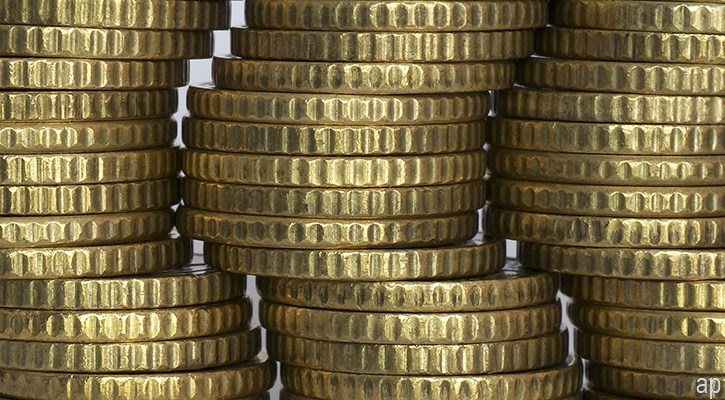
UK investors are increasingly looking to passive funds such as ETFs and trackers to access the biggest markets and most popular themes and sectors. Last year, passive funds made up £33 billion of the new money put into all UK funds, according to Morningstar Direct data, out of a total of £35.7 billion of inflows. And trackers took up the three top spots of the most popular UK funds by flows.
So for the first time, our Isa season special picks include three passive funds, two rated Silver and one Gold, as chosen by Morningstar’s team of passive investing experts.
iShares Global Aggregate 1-5 year Bond Index Fund - Silver
Bonds came into their own during the March 2020 sell-off, but fixed-income funds have suffered a bout of volatility recently as yields have spiked over inflation fears. So why bonds now? “Investors’ attention is now mostly focused on the post-pandemic recovery and this favours a risk-on attitude that encourages an overweight on equities. Still, any balanced portfolio must have a decent ballast of fixed income holdings to counter equity market volatility,” says Jose Garcia Zarate, associate director of passive strategies at Morningstar. He says the iShares fund is a “one-stop shop for global developed bond markets”, meaning investors don’t need to make decisions about what countries or asset classes to choose within the large fixed-income universe.
In the recent sell-off, longer-dated bonds have fallen furthest as investors worry about long term inflation, but this fund focuses on bonds with a “maturity” of between 1 and 5 years – ie. the period when investors get their money back. “No one expects central banks to raise rates anytime soon, but if the recovery gathers pace and inflation picks up sustainably, the risks for a move higher on rates will increase and so keeping to short maturities will provide a cushion,” says Zarate. The fund is rated Silver under the new Morningstar Qualitative Rating (MQR) (and offers a cheaper unhedged share class costing 0.15% and a hedged class 0.19% for UK investors who want to strip out currency movements. Chinese government debt is one of top holdings in the fund.
Vanguard LifeStrategy 80% Equity – Gold
For investors wanting a blended portfolio of equities and blonds, the Vanguard LifeStrategy range is a popular option. The only decision you have to make is what your equity allocation is (and by default what your bond weighting is): and these funds go up in increments of equity weightings from 20% to 100%. The 20%, 40%, 60%, 80% funds all have Morningstar Analyst Ratings of Gold – and the 100% equities fund is rated Silver under the MQR methodology. Monika Dutt, director of passive strategies research, says the choice depends on an investor’s age and/or risk profile, but the 80% weighting would suit investors who want to position their portfolios towards the expected recovery this year and beyond.
“The success of Vanguard LifeStrategy 80% Equity lies in its straightforward and low-cost approach of investing in a diversified pool of bonds and equities, making it a sound long-term option for many investors,” says analyst Rajesh Yadav.
For UK investors worried about “home bias” – the tendency of people to buy shares in their domestic market – the equities portion of the portfolio weights 25% towards the UK and 75% overseas, and the fixed income element has a 30%/70% split between UK bonds and overseas bonds. The fixed-income exposure has a bias towards government bonds and no “junk bond” exposure. “The rationale is that government bonds have generally provided more effective diversification of equity risk than low-grade credit, which often shows significant correlation with equities,” says Yadav.
The fund has as ongoing charge of 0.22% and has returned more than 10% on an annualised basis over five years.
Vanguard FTSE Developed World ETF (VEVE) – Silver
After two index fund choices, our final pick is an ETF with a Morningstar Analyst Rating of Silver and an ongoing charge of 0.12%. “The Vanguard FTSE Developed World ETF is a solid choice for adding core developed-markets equity exposure to an investment portfolio,” says Morningstar passives analyst Dimitar Boyadzhiev. As the name suggests, the ETF covers a wide range of stocks, and aims to represent around 98% of the global developed equity market. With a slight overweighting in large-caps over mid and giant-caps, the fund “stands as an adequate representation of the opportunity set available to investors”, says Boyadzhiev.
Performance-wise, the ETF has shown above average returns over three and five-year periods compared with peers in the Global Large-Cap Blend Equity category – last year the fund gained 12%, nearly 2% above its category, and in 2019 it returned 22%, nearly 4% above its category. The top five holdings in the ETF are as you would expect given the size of these companies within global indices: Apple (AAPL), Microsoft (MSFT), Amazon (AMZN), Facebook (FB) and Tesla (TSLA).
Overall, there are 2,142 equity holdings in the ETF, and the top 10 holdings make up 17% of the fund and 20% of the portfolio is weighted towards technology. In terms of country exposure, the United States makes up more than 62%, the Eurozone nearly 10% and Japan just over 8% of the ETF. Europe ex-UK and UK exposure comes in around 5%.




























